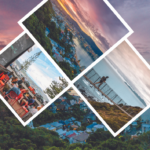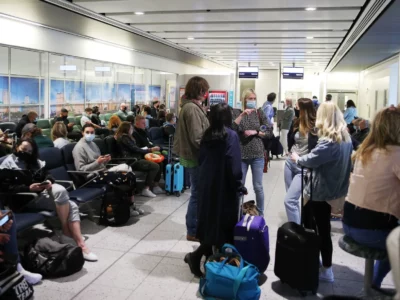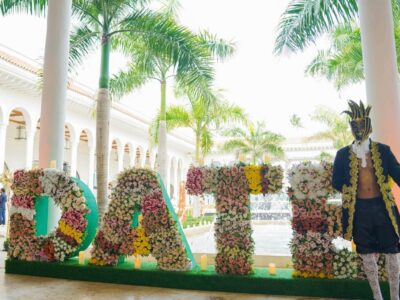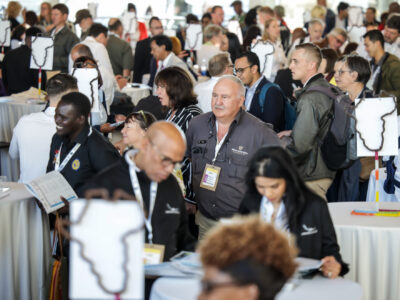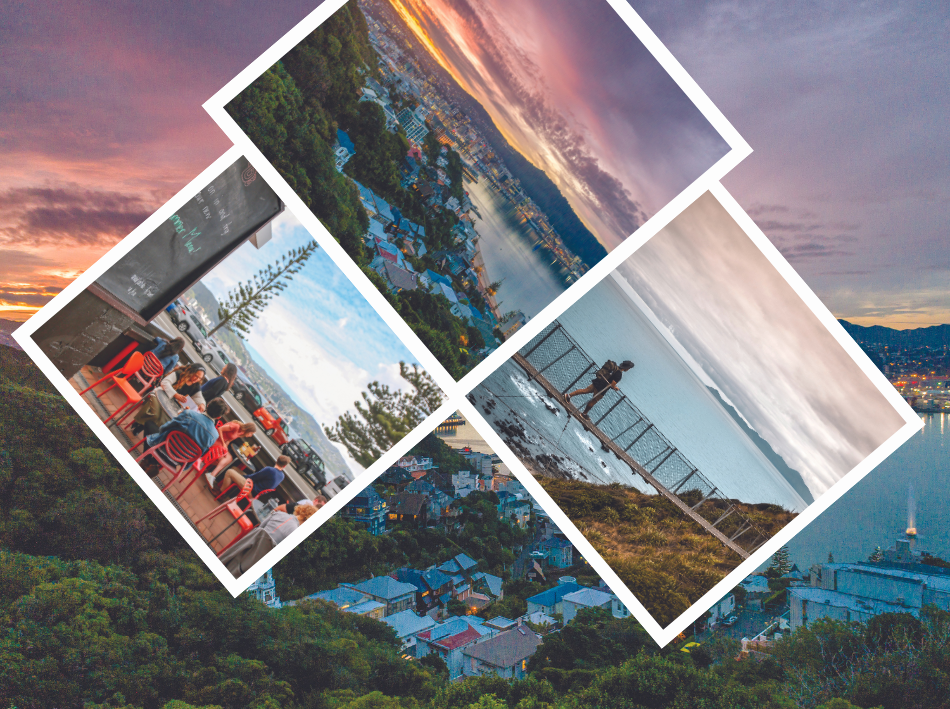
A bird’s eye view of Wellington shows its rich nature (Photos: WellingtonNZ)
When the journey is as beautiful as the destination, joy truly whistles differently. I experienced this last April as I took the ferry to the capital Wellington, nestled on the south western tip of New Zealand’s north island. The scenic journey, which had commenced from the south island’s Picton, lasted a little over three hours, and went through Cook’s Strait, named after the famous British explorer James Cook, who was the first European commander to sail through it in the 1700s on his famous ship HMS Endeavour. The voyage had led him to become the first European to set foot on both New Zealand and Australia and therefore, this fact also contributed richly to my joy on board.
Wellington began to greet me even while the ferry was far from the terminal. From the ferry itself, one can see several colourful Victorian homes sprinkled on the hill on which Wellington is settled. It was definitely awe-inspiring.
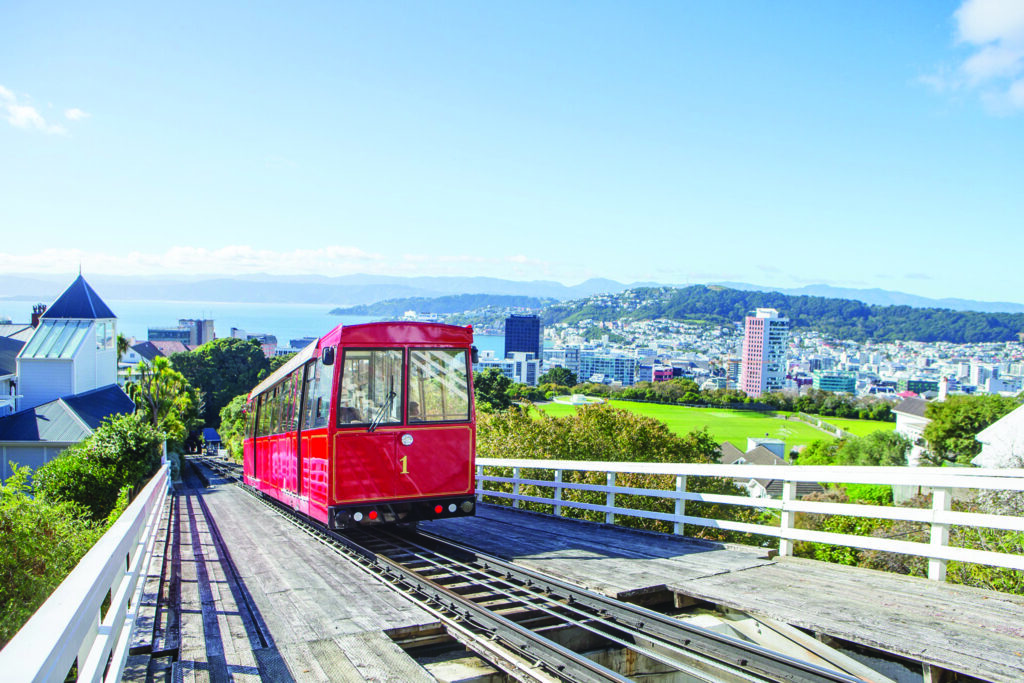
Wellington has many public and private cable cars (Photos: WellingtonNZ)
It was sunny but a windy evening and until the point that I disembarked from the ferry, my eyes remained transfixed on the amazing view that Wellington presented, a scene enchanting enough to have been expropriated from a maestro like Monet.
Thanks to my host, soon after I had set foot on terra firma, I found myself looking at the same view, albeit from a different angle as I stood atop Mount Victoria, a hill that rises 196 m above Wellington, offering panoramic views of the city and is ideal for small treks in the wilderness prevalent here. It is perhaps also the ideal place from where a visit to Wellington should begin.
My visit to Mount Victoria also confirmed Wellington’s connection with nature. We may have come in a car but there were many around who had come trekking, which is also one of the favourite activities of locals. According to the Wellington Tourism board, the capital and its surroundings cover nearly 300 km of tracks passing through a variety of landscapes, which are commonly used not only for walking but also for mountain biking and horse riding. Several tracks also originate from the streets in the city centre, giving instant access to nature.
But one such access to nature from the bustling Lambton Quay is extraordinary. A bright red coloured cable car transports one within minutes to Kelburn, the quiet neighbourhood on the hill, which is also home of the Wellington Botanic Garden, spread in several hectares. The cable car ride is a must for every visitor. Today, tourists are the main passengers on this, though when launched in 1902, it was meant mainly for convenience of the Kelburn residents, for whom going up and down the hill remained a titanic task.
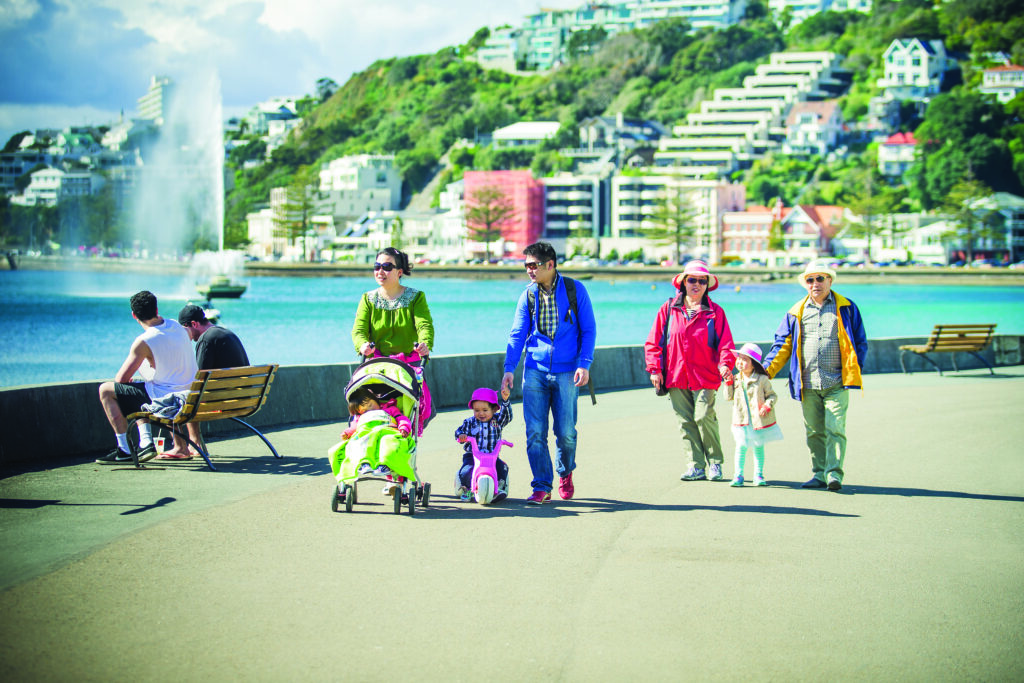
Wellington Tourism board says that the capital and its surroundings cover nearly 300 km of tracks passing through a variety of landscapes
Like the cable cars in San Francisco, this also runs on a track and is pulled up by the cables under the tracks. Costing NZD 5 (INR 250) each way, its best part is the view from it, which rises to 120 m over a length of 612 m.
Rather uniquely, Wellington not only has cable cars, but it also boasts of a small cable car museum where I learnt that as it is hilly, many residents also have their private cable cars, and their number is nearly 300. “We don’t want to disturb nature and hence a personal cable car was an interesting alternative. They are small but most of them can fit a family of four, for which permissions first have to be taken from the city’s government. The first such private cable car came up in the 1950s. It may be a bit expensive to set them up but their role has decreased the use of automobiles for every outing,” April, a volunteer at the museum, told me.
During my walks, I also spotted one of them on its way down in which an elderly couple waved towards me, who were seated with their dog.
Minutes later, I found myself in the Botanic Garden, which is split in many sections, and also has the oldest European cemetery in Wellington, where there are graves from 1841, which used imported and local stone, iron and wood. But even before the colonial rule here, the same site was also used by the Maori community for their burials. There are benches around the silent graves and as I took a seat, a small group arrived, led by a guide. Respecting the silence here, talking softly seemed their tour’s rule.
Following morning, as I woke up with a studious spirit, I weaved my way towards the New Zealand Parliament in Thorndon, the historic district of the capital, where vintage structures from the 1800s dot the streets. But the contemporary Beehive building of the parliament, which actually resembles a beehive, truly stands out. Inaugurated in the late 1970s, it was an addition to the two other parliament buildings, connected with each other. One of them, which houses the library, dates back to 1807. The tour lasts about an hour and towards the end we lingered around the entrance to the Prime Minister’s Office as our guide told us that we could be lucky enough to spot the Prime Minister, if he stepped out of his office.
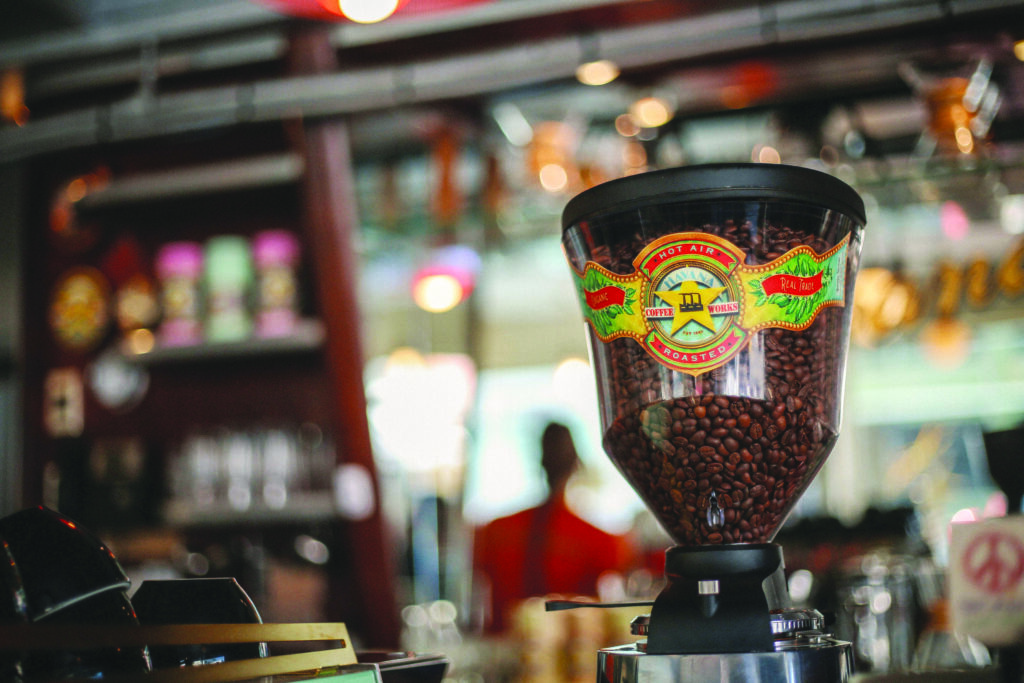
Coffee is a serious thing here, where local Kiwi brands dominate
Having gotten my appetite built up for exploring history of Wellington, and New Zealand, I tried to visit as many museums as possible during my stay. One of the best discoveries for me was the Museum of New Zealand at the Waterfront, which is spread over six large floors, where the collection of artworks, artifacts and rare documents is staggering. Its aim is to introduce the visitors to not only Wellington but also New Zealand, how it was born and how it progressed. One can also choose a free guided tour, offered every hour.
Having fed upon stories of emergence of New Zealand as a country that we know of today, my appetite for food had also built up. So, I headed straight to Cuba Street, which is where you find restaurants staging every cuisine. It remains alive with tourists and street performers but as I was on a rather tight budget, I also looked at supermarket shelves, where healthy options caught my eye, from salad bowls, to cold pasta plates, and even packs of assorted breads and desserts. I also enjoyed freshly prepared meals at the food courts of supermarkets, breakfasts in particular. Avocado toast topped with a sunny side up omelette and washed down with a Flat White coffee remained my favourite order.
During the day, I punctuated my walks with leisurely stops in coffee shops, and they appeared every few steps. Every visit made me realise that coffee is a serious thing here, where local Kiwi brands dominate, like many other parts of New Zealand. If you want to enjoy in the café, the baristas everywhere ask, “Would you like to begin with our freshly squeezed juice?” Sitting in the cafes and watching the world go about its business all around me, I felt very local.
But the best local experience was on my last morning as I decided to comb through the historic and famous Harbourside Market along the waterfront. It was Sunday, when this large open air market sprouts where besides fresh fruits, vegetables and seafood, fresh from the boats, there were infinite options for international drinks and food, from Indian chai (tea) to Bavarian hot dogs, and much more which kept the air so delicious. I adored the freshly baked treats such as pies and Danish pastries, offered with a warm smile for only a few dollars. My friend told me that nearly 25,000 people flock to this market every Sunday and I found it to be a highly credible figure, looking at the number of people milling about.

Museum of New Zealand at the Waterfront is spread over six large floors (Photos: WellingtonNZ)
Adding to the charm of the market, that began operations in the 1920s, are the numerous musicians, who play a variety of instruments every few metres and who make the market festive and the residents who are always ready to talk about their city and life. Two of them suggested that I should stroll the waterfront, for the many memorials and art works that it is home to. I paid heed to their advice the same evening and as the sun set over the harbour, unfortunately, it was also time for me to head out.
An hour later, my bus to Palmerston North was all set to bid goodbye to the Kiwi capital, which figured in the Time magazine’s 2019 list of ‘best places on planet earth’. Even in 2023, it certainly is!








